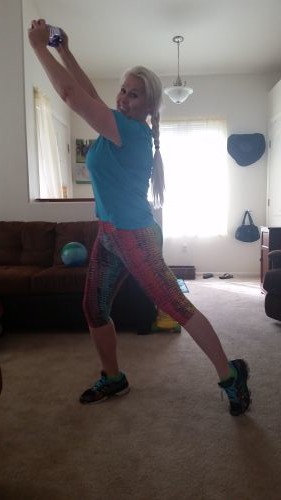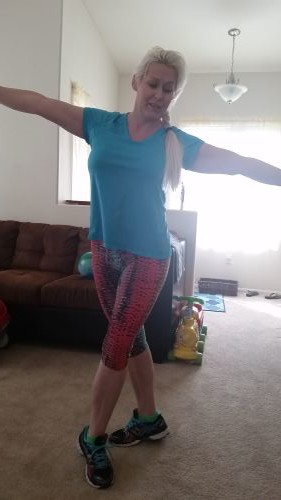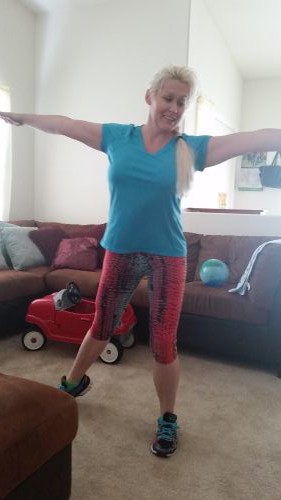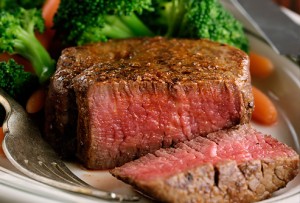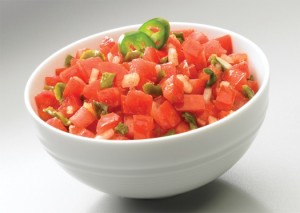September 7, 2015
June 6, 2012
Silver Yoga Improves Fitness in Seniors
 While the benefits of performing yoga have long been discussed, it can often be an intimidating form of exercise to try. Some people picture a studio full of perfect-looking twenty-somethings who can contort their bodies into all kinds of interesting positions. Some people are afraid they might look silly if they don’t know what to do or they are simply afraid of injuring themselves if they try to bend this way or that.
While the benefits of performing yoga have long been discussed, it can often be an intimidating form of exercise to try. Some people picture a studio full of perfect-looking twenty-somethings who can contort their bodies into all kinds of interesting positions. Some people are afraid they might look silly if they don’t know what to do or they are simply afraid of injuring themselves if they try to bend this way or that.
As most people age, they start to lose balance and flexibility, among other indicators of physical fitness, making it even less likely that they would attempt an activity like yoga that involves stretching and holding poses for certain lengths of time. Recently a group of researchers in Taiwan developed a type of yoga exercise program that they’ve named “silver yoga.”
This program, developed by Chen, Tseng, and colleagues (2), consists of four phases:
- 20 minute warm-up of eight poses to loosen up the body;
- 20 minutes of hatha-style yoga in which seven gentle stretching postures are performed;
- 10 minutes of relaxation in which three activities to rest the body are performed; and
- 15 minutes of guided imagery to facilitate relaxation.
This program was critically reviewed by experts in the fields of yoga, elderly exercise, geriatric nursing, geriatric physical therapy, osteopathy, sports physiology, sports medicine, and/or sports injuries (2).
In a study published in Nursing Research, Chen, Fan, and colleagues (1) studied a group of 55 participants aged 65 or older who participated in 24 weeks of a three time per week silver yoga exercise program. Measures of body composition, cardiovascular-respiratory function, flexibility, muscular power and endurance, balance, and agility were taken before the study began, at twelve weeks, and at 24 weeks.
At the end of the study, participants in the silver yoga group had significantly reduced body fat percentage, decreased respiration rate (indicating that the exercise took less effort, and improved shoulder range of motion (right shoulder abduction) compared to their pre-silver yoga measurements (1). Additionally, the silver yoga group had improved in all measured physical fitness categories when compared to the control group at the end of the 24 week study.
As the general population ages, it’s becoming more important than ever for senior-based health programs to be developed and implemented to keep our seniors healthy and reduce the burden on the healthcare system. A silver yoga program is just one of many exercise options for older adults to participate in to positively affect their health. The importance of the above study is that it shows that exercise programs tailored specifically to the abilities and needs of an older population can, in fact, improve their overall physical health.
June 5, 2012
The Benefits of Personal Training
 Many people today are making a clear decision to make exercise a part of their lifestyle and regular routine to maintain optimal health. Generally it is recognised that a balanced exercise program of fitness, flexibility and strength will help reduce cholesterol and blood pressure, help manage your weight, strengthen bones, improve sleep, increase energy and make you look and feel fantastic!
Many people today are making a clear decision to make exercise a part of their lifestyle and regular routine to maintain optimal health. Generally it is recognised that a balanced exercise program of fitness, flexibility and strength will help reduce cholesterol and blood pressure, help manage your weight, strengthen bones, improve sleep, increase energy and make you look and feel fantastic!
However, for someone new to exercise, getting going can be a little overwhelming especially if the last time you participated in any structured physical activity was in PE class at High School. To ensure your training experience is a positive one and to avoid your motivation dwindling after your first exercise session, hire a personal trainer to design you a program specific to your needs.
Today having a personal trainer is affordable with alot of people taking advantage of it. Using a personal trainer will fast track your results by teaching you the right technique and providing structure and monitoring progressions on programs specific to your requirements. The following are some benefits and tips for getting started with personal fitness training and to ensure you find a personal fitness trainer that matches you and your needs.
A professional personal trainer can conduct a full baseline assessment that may include a health questionnaire, body composition, strength tests, core functionality, range of motion and diet and lifestyle analysis. Assessments are a positive way to identify your requirements and anything that may need to be considered before creating a structured program, such as corrective exercise to rehabilitate an existing injury.
Working with a personal fitness trainer can help you stay motivated and can also keep you accountable. Results are generally just on the other side of your comfort zone and the extra push, motivation and encouragement is very helpful, especially when you have just finished a long day at work and the couch or bar stool are the first thing that springs to mind. Appropriately mixing your program, will not only keep training interesting, but will ensure maximum results. Humans are designed to adapt very fast.” An exercise program that may be difficult initially, becomes easier within weeks. To avoid a training plateau, working with a fitness trainer who can design programs to continually challenge you will yield the best results.
To get exactly what you want, it is important that you choose the right fitness trainer. If you have a clear goal such as weight loss it would be advised to meet with your potential fitness trainer first to make sure he or she has the expertise in the area of diet and weight loss. Read testimonials and ask for a client case study. Experience and skills vary in the personal training and fitness industry, so by asking questions you should be made to feel more comfortable about using a particular fitness trainer. Not only does your fitness trainer need to be results orientated, it is important that you get along, especially if you are going to be spending some considerable time with them.
Depending on an individuals goals and budget, personal training works differently for everyone. You may be interested in using a personal trainer, personal fitness training, a fitness trainer, personal training several times a week, or it might be more economical for to see your personal trainer once a fortnight. Either way, using a personal trainer with some form of regularity will give you clarity, support, motivation, consistency, information, structure and accountability.
–
Source: Fitness.com
March 26, 2012
The Leanest Cut of All
Is it possible to eat beef on a regular basis and not get beefy in the process? Absolutely, says an article that appeared in a supplement to the October 2005 issue of Tufts University Health & Nutrition Letter. The trick is to select the right cut of beef and to exercise portion control.
Here’s a look at 10 of the leanest cuts, which, according to the National Cattleman’s Beef Association, contain on average only 1 more gram (g) of saturated fat than a skinless chicken breast per 3-ounce serving:
1. eye round (1.4 g saturated fat, 4 g total fat)
2. top round steak (1.6 g saturated fat, 4.6 g total fat)
3. chuck mock tender steak (1.6 g saturated fat, 4.7 g total fat)
4. bottom round (1.7 g saturated fat, 4.9 g total fat)
5. top sirloin (1.9 g saturated fat, 4.9 g total fat)
6. round tip (1.8 g saturated fat, 5.0 g total fat)
7. 95% lean ground beef (2.4 g saturated fat, 5.0 g total fat)
8. brisket (flat half) (1.9 g saturated fat, 5.1 g total fat)
9. shank crosscuts (1.9 g saturated fat, 5.4 g total fat)
10. chuck shoulder roast (1.8 g saturated fat, 5.7 g total fat)
—
original article from IDEA Fitness
March 23, 2012
Low-Fat Beats Low-Carb For Heart Health
For people at risk for hypertension, reducing fat intake may be key to protecting the heart. According to a study published in the American Heart Association’s journal Hypertension, a low-fat diet is more effective than a low-carbohydrate diet in reducing the risk of developing hypertension, a precursor to cardiovascular problems such as atherosclerosis.
When the two types of diets were compared in apparently healthy participants, the low-fat diet was the winner at improving blood pressure markers, such as blood flow in the arteries. This led the researchers to conclude that low-fat diets “may confer greater cardiovascular protection” than low-carb diets.
—
source: IDEA Fitness
March 22, 2012
Hot Salsa Tip
Did you know that salsa has surpassed ketchup as America’s favorite condiment? Salsa can spice up all kinds of bland meals. Stir in a jar of your favorite salsa to add some zing to a pot of kidney, white, pinto, red or black beans; then top with a dollop of sour cream for a unique, high-fiber side dish.
April 29, 2011
Interval training may help obese and overweight people slim down
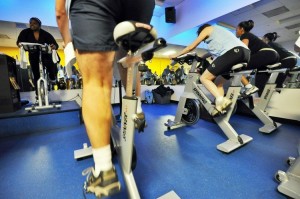
A group cycling class can offer high-intensity cardiovascular training. (Jewel Samad / AFP/Getty Images)
The one-two punch of high-intensity exercise and healthful eating was helpful in getting overweight and obese people to slim down, a study finds.
The study, presented this week at the National Obesity Summit in Montreal, Canada, focused on data on 62 overweight and obese men and women involved in a nine-month program at the Montreal Heart Institute. The participants engaged in two to three weekly one-hour supervised exercise sessions and were instructed on how to follow a Mediterranean diet.
The exercise sessions concentrated on high-interval training, or alternating between short periods of vigorous workouts and rest periods. Interval training has been shown in some studies to promote weight loss as it boosts cardiovascular health. Participants had a five-minute warm-up followed by repeated bouts of exercise at 80% of peak effort. Those were interspersed with brief recovery periods, and the workout finished with a five-minute cool-down. In addition, the study subjects did a 20-minute weight training circuit and were encouraged to do one or two moderate 45-minute exercise sessions a week.
At the end of the study, the men and women on average lost 5.5% of their body mass, reduced waist circumference by 5.15% and increased cardiovascular capacity by 15%. They also had an average 7% decrease in LDL (bad) cholesterol and an 8% increase in HDL (good) cholesterol.
In the study the authors concluded that the supervised twice-weekly interval training program “appeared feasible, safe and time-efficient in this obese population.”
April 15, 2011
7 Breakfast Foods to Swap In, Not Out
Is breakfast really the “most important” meal of the day? Maybe, at least that’s what they told us in health class.
So if breakfast is the first meal of the day and you’re trying to lose weight, it’s probably a smart idea to make your first meal a good one.
And since most dieters judge food by two simple factors: fat and calories. Here are seven foods you should ditch and seven foods you should switch to if you’re looking for a better breakfast.
English Muffin or Bagel?

Sorry, but a bagel with a schmear of cream cheese just isn’t Kosher – at least not for dieting. You’re better off switching to toasted nooks and crannies dripping with melted butter.
*English Muffin, with butter
5.8g total fat
189 calories
Bagel, with cream cheese
8g total fat
436 calories
Apple or Banana?

Let’s face it, both apples and bananas are awesome – probably the healthiest foods on this list – but, if you’re looking to cut calories, go with the apple.
*Apple
0.17g total fat
50 calories
Banana
0.33g total fat
100 calories
Blueberry Yogurt or Oatmeal?

Even without the “probiotics,” eating a light yogurt is smarter than a bowl of old fashioned oatmeal.
*Dannon Light’n Fit Blueberry Yogurt (6oz)
0g total fat
80 calories
Old Fashioned Quaker Oats, with water (1/2 cup)
3g total fat
150 calories
Coffee with Skim Milk or 2% Milk?

For most people, missing their morning coffee is grounds for murder. So please, drink up! But make sure you stick with non-fat milk, not 2%
*Starbucks Coffee, with non-fat milk (short)
0g total fat
35 calories
Starbucks Coffee, with 2% milk (short)
2g total fat
50 calories
Wheaties or Raisin Bran?

One cereal uses professional athletes to push product. Another is peddled by the sun. The sports stars win, go with a bowl of Wheaties.
*Wheaties (1 cup)
1g total fat
110 calories
Raisin Bran (1 cup)
1.3g total fat
190 calories
Turkey Bacon or Pork?

It isn’t real bacon – it might not even taste like it – but the fat and calories don’t lie. Spare a pig, eat a turkey!
*Butterball Bacon-Style Turkey (1 slice, 18g)
3g total fat
40 calories
Pork Bacon (3 slices, 19g)
7.9g total fat
103 calories
Grapefruit Juice or Orange Juice?

Grapefruit juice might not taste as sweet, but choke it down. It’s better than orange juice. And when you drink grapefruit juice, it’s less likely to squirt in your eye.
*Tropicana Grapefruit Juice (8 fl oz)
0g total fat
90 calories
Tropicana Orange Juice (8 fl oz)
0g total fat
110 calories
April 8, 2011
“Vegetarian” Diets Reduce Heart Risks
 Eating a meat-free diet may lower your risk of developing heart disease, suggests a new study, helping to lessen the likelihood of metabolic syndrome.
Eating a meat-free diet may lower your risk of developing heart disease, suggests a new study, helping to lessen the likelihood of metabolic syndrome.
Metabolic syndrome is a collection of diseases that contribute to cardiovascular disease, including diabetes, obesity, and high blood pressure.
Researches found vegetarians had better blood sugar, blood fat, blood pressure, waist size, and body mass measurements than non-vegetarians.
In the study, 23 out of every 100 vegetarians were found to have at least three metabolic syndrome factors, compared with 39 out of every 100 non-vegetarians and 37 out of every 100 semi-vegetarians.
For the study, published in the journal Diabetes Care, scientists analyzed the diet of three different groups of people: vegetarians, non-vegetarians, and semi-vegetarians; in total, more than 700 adults.
The researchers used a questionnaire to obtain information on participants’ eating habits. People were classified as vegetarian, eating meat less than once a month; semi-vegetarian, eating meat less than once a week; and non-vegetarians. However, the term “vegetarian” is incorrectly defined; true vegetarians never eat meat.
Results showed vegetarians had an average body mass index (BMI) of 25.7. Unlike non-vegetarians who had an average BMI close to 30. Semi-vegetarians’ BMI fell between the vegetarians and non-vegetarians.
A BMI between 25 and 29 is considered overweight and a BMI from 30 and up is obese. Normal weight is between 18.5 and 25.
The findings remained steady when researchers combined all the readings to determine the risk of metabolic syndrome.
In 2008, Vegetarian Times reported that 7.3 million Americans follow a vegetarian diet: 59% are female, 41% are male. As of 2009, the total U.S. population was nearly 308 million.
According to the American Heart Association, a vegetarian diet – with its heavy vegetable consumption and low intake of saturated fat from animal products – has been shown to reduce the risk of heart disease, heart attack, obesity, high blood pressure, and some forms of cancer.
Article courtesy from diet-blog
Image courtesy from first reason blog
February 12, 2011
United Airlines Charges Extra For “Larger” Customers
 United Airlines passengers who do not meet specific size limits may be forced to shell out a bit more cash—or remain grounded, according to information posted on the company’s website. The new requirements were implemented to enhance “the comfort and well-being of all customers aboard United flights.” The website states that passengers must be able to
United Airlines passengers who do not meet specific size limits may be forced to shell out a bit more cash—or remain grounded, according to information posted on the company’s website. The new requirements were implemented to enhance “the comfort and well-being of all customers aboard United flights.” The website states that passengers must be able to
- fit into a single seat in the ticketed cabin;
- properly buckle the seatbelt using a single seatbelt extender; and
- put the seat’s armrests down when seated.
A United customer who cannot meet the requirements will be given a few options, depending upon seating availability. If there are available seats on the purchased flight, the passenger will be relocated next to an empty seat. If no seating is available, the passenger will be required to “purchase an upgrade to a cabin with available seats that address the above-listed scenarios or change his or her ticket to the next available flight and purchase a second seat in addition to the one already purchased.” Customers who do not meet the criteria and choose not to purchase an extra seat will be barred from boarding.
